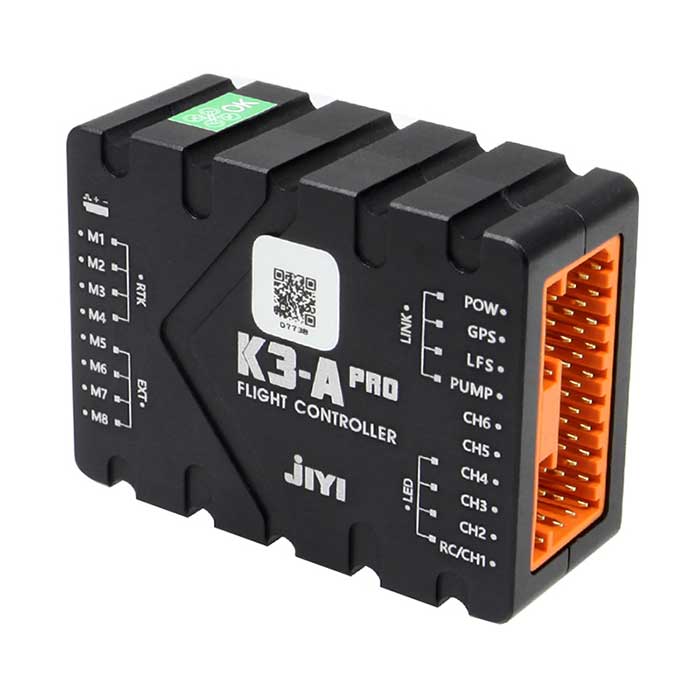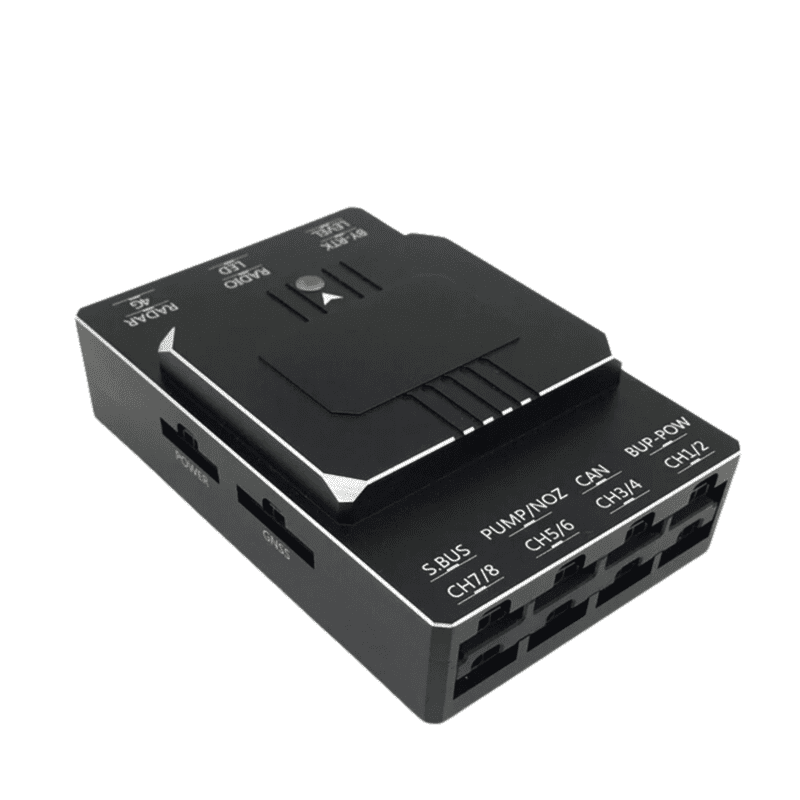SparkNavi Drone Flight Controller and GNSS/INS Made in Taiwan: Blazing A Trail in Drone Modern Technology
SparkNavi Drone Flight Controller and GNSS/INS Made in Taiwan: Blazing A Trail in Drone Modern Technology
Blog Article
Checking Out the Duty of Drone Flight Controllers in Enhancing Flight Stability and Navigating Efficiency
The innovation of drone technology has actually substantially increased the relevance of trip controllers, which work as the mind of these aerial lorries. By incorporating real-time information from a range of sensors, flight controllers improve flight stability and navigation efficiency, making sure that drones can operate efficiently even in intricate atmospheres. This discussion will certainly discover the essential elements that add to these renovations, as well as the implications for the future of independent flight. What innovations lie in advance that could even more transform the abilities of drone trip controllers?

Recognizing Trip Controllers
Flight controllers are indispensable components in the performance of drones, acting as the brains that maintain and manage trip operations. These advanced tools process data from different sensors, including accelerometers, gyroscopes, and GPS, to ensure that the drone keeps its intended trip path. The flight controller translates this information and performs commands based upon pre-defined formulas, enabling the drone to reply to environmental modifications, such as wind or barriers.
The main function of a flight controller is to preserve security during trip. It attains this by making real-time adjustments to the drone's motors and control surface areas, guaranteeing balance and control. In addition, modern-day trip controllers incorporate innovative attributes such as waypoint navigation, permitting automated trip paths and improved operational performance.
Understanding the architecture of flight controllers is critical for both hobbyists and specialists. They typically contain a microcontroller, firmware, and different user interfaces for sensing unit input and interaction. As innovation advancements, flight controllers have come to be much more qualified and compact, incorporating expert system to adapt and improve decision-making procedures to complex flight scenarios. This evolution signifies a critical growth in the drone industry, leading the means for much more advanced applications and more secure operations.
Key Components of Trip Stability
Attaining ideal flight stability in drones depends on numerous vital elements that operate in performance to make certain controlled and smooth operations. Central to this stability is the trip controller itself, which refines data from various sensors to preserve the desired trip mindset. This includes accelerometers and gyroscopes that determine activity and alignment, permitting real-time changes to the drone's setting.
Another essential element is the digital speed controllers (ESCs), which regulate the power delivered to the electric motors. By finely adjusting electric motor speeds in response to trip controller commands, ESCs assist maintain equilibrium and counteract disturbances triggered by wind or unexpected motions.
Furthermore, the layout of the drone's structure plays a critical duty in flight stability. A well-structured structure lessens vibrations and improves the overall aerodynamic account, adding to smoother flight attributes. Lastly, the assimilation of advanced formulas within the trip controller aids in predictive modifications, ensuring a responsive and versatile trip experience.
Together, these parts create a natural system that improves a drone's stability, enabling for specific maneuvering and boosted efficiency in various flight problems.
Navigating Efficiency Techniques
Efficiency in navigating is essential for enhancing drone operations, especially in intricate settings. Reliable navigation methods enhance the capacity of drones to pass through difficult surfaces and stay clear of obstacles, thus enhancing functional performance and safety and security.
One popular method is the execution of advanced GPS and inertial measurement devices (IMUs) that provide exact location monitoring and alignment data. These modern technologies allow drones to compute ideal trip courses in real-time, taking right into account various aspects such as wind problems and possible obstacles.
One more strategy involves using formulas for course planning and optimization. Algorithms such as A * and Dijkstra's formula can be released to determine the most reliable path while decreasing power intake and trip time. In addition, integrating maker learning designs can make it possible for drones to adaptively pick up from their environments, enhancing navigating capabilities with experience.

Impact on Autonomous Drones
The combination of innovative navigation techniques has actually greatly transformed the capacities of autonomous drones, enabling them to run with greater autonomy and accuracy. SparkNavi drone flight controller and GNSS/INS made in taiwan. These enhancements are mostly credited to sophisticated trip controllers that utilize real-time information processing and sensor combination, permitting drones to navigate intricate environments perfectly
The impact on autonomous drones extends past mere navigating; it incorporates enhanced obstacle avoidance, boosted security during vibrant problems, and boosted mission dependability. By leveraging algorithms that include maker knowing and expert system, drones can adapt to altering conditions, making notified decisions that maximize their flight courses while reducing threats.
Additionally, the implementation of durable trip controllers has actually helped with the implementation of complicated jobs, such as aerial examinations, shipment services, and farming monitoring, with very little human treatment. more information This ability not just improves procedures yet also minimizes human mistake, thereby improving general safety and security.
Therefore, the functional extent of autonomous drones has broadened significantly, making them indispensable devices in various industries. Their capability to do successfully in diverse scenarios highlights the essential function that progressed trip controllers play fit the future of unmanned aerial systems.
Future Trends in Trip Control
Frequently, developments in trip control innovation are positioned to redefine the landscape of drone procedures in the coming years. Emerging fads indicate a considerable change towards improved man-made intelligence (AI) integration, enabling flight controllers to process real-time data more effectively. This development will assist in improved decision-making abilities, enabling drones to adjust to vibrant ecological conditions autonomously.
In addition, the execution of maker understanding algorithms is expected to enhance predictive upkeep, therefore decreasing downtime and expanding the lifecycle of drone parts. This positive strategy to upkeep will certainly be important as drone applications expand throughout numerous sectors, from agriculture to logistics.

.png)
Lastly, developments in protected communication methods will certainly resolve safety and regulatory concerns, guaranteeing that drones can operate seamlessly in busy airspaces (SparkNavi drone flight controller and GNSS/INS made in taiwan). Collectively, these trends point towards a future where trip control systems are not just smarter and more reliable yet also capable of running securely in a progressively incorporated airspace
Verdict
In conclusion, drone flight controllers are important to enhancing flight stability and navigation efficiency via the advanced processing of sensing unit data. By keeping optimal trip perspectives and using innovative algorithms for path optimization and barrier avoidance, these controllers dramatically contribute to the autonomy and functional safety of drones. As technology continues to advance, even more developments in flight control systems are expected, guaranteeing enhanced performance and expanded capacities in the world of unmanned aerial cars.
By incorporating real-time information from a selection of sensing units, trip controllers enhance trip stability and navigating effectiveness, guaranteeing that drones can run efficiently also in complicated atmospheres.Flight controllers are essential elements in the functioning of drones, serving as the brains that manage and support flight procedures. In addition, modern-day flight controllers include advanced features such as waypoint navigating, enabling for automated flight courses and boosted operational efficiency.
Central to this stability is the flight controller itself, which processes information from various sensing units to keep the desired trip mindset.In original site conclusion, drone flight controllers are indispensable to enhancing trip security and navigating effectiveness via the sophisticated handling of sensing unit data.
Report this page